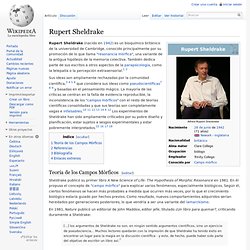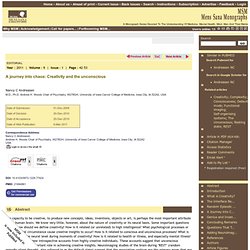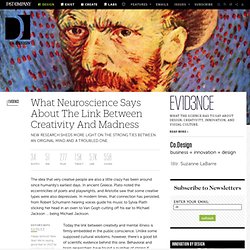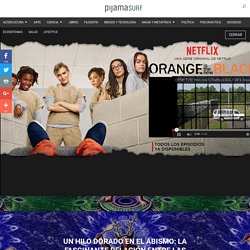

9 Stages of an Acid Trip. Jiddu Krishnamurti. Jiddu Krishnamurti (Telugú:జిడ్డు కృష్ణమూర్తి) o J.

Citas. Rupert Sheldrake. Rupert Sheldrake (nacido en 1942) es un bioquímico británico de la universidad de Cambridge, conocido principalmente por su promoción de lo que llama "resonancia mórfica", una variante de la antigua hipótesis de la memoria colectiva.

También dedica parte de sus escritos a otros aspectos de la parapsicología, como la telepatía o la percepción extrasensorial.[1] [2] Articles and Papers - Scientific Papers - Morphic Resonance - Morphic Fields. By Rupert Sheldrake In the hypothesis of formative causation, discussed in detail in my books A NEW SCIENCE OF LIFE and THE PRESENCE OF THE PAST, I propose that memory is inherent in nature.

Most of the so-called laws of nature are more like habits. My interest in evolutionary habits arose when I was engaged in research in developmental biology, and was reinforced by reading Charles Darwin, for whom the habits of organisms were of central importance. As Francis Huxley has pointed out, Darwin’s most famous book could more appropriately have been entitled The Origin of Habits. Morphic fields in biology Over the course of fifteen years of research on plant development, I came to the conclusion that for understanding the development of plants, their morphogenesis, genes and gene products are not enough.
All cells come from other cells, and all cells inherit fields of organization. Thanks to molecular biology, we know what genes do. Ernst Haeckel Tafel_06. Strange Mental disorders. A journey into chaos: Creativity and the unconscious Andreasen NC - Mens Sana Monogr. The capacity to be creative, to produce new concepts, ideas, inventions, objects or art, is perhaps the most important attribute of the human brain.

We know very little, however, about the nature of creativity or its neural basis. Some important questions include how should we define creativity? How is it related (or unrelated) to high intelligence? What psychological processes or environmental circumstance cause creative insights to occur? How is it related to conscious and unconscious processes? Keywords: Creativity; Complexity; Consciousness; Default mode; Functional imaging; Self-organising systems; The Unconscious; Resting state; REST Creativity is one of our most valued human traits. The first step in studying creativity is to define what it is. Perhaps, the strongest demonstration of the difference between these two mental capacities comes from the work of Lewis Terman (1925-1959).
What Neuroscience Says About The Link Between Creativity And Madness. The idea that very creative people are also a little crazy has been around since humanity's earliest days.

In ancient Greece, Plato noted the eccentricities of poets and playwrights, and Aristotle saw that some creative types were also depressives. In modern times, that connection has persisted, from Robert Schumann hearing voices guide his music to Sylvia Plath sticking her head in an oven to Van Gogh cutting off his ear to Michael Jackson … being Michael Jackson. Today the link between creativity and mental illness is firmly embedded in the public conscience. Creativity Tied To Mental Illnesses Like Bipolar Disorder, Schizophrenia In New Swedish Study. By: LiveScience Staff Published: 10/16/2012 03:57 PM EDT on LiveScience Creative types are thought to be more likely to suffer from mental illnesses, such as bipolar disorder and schizophrenia.

A new large-scale study of the Swedish population helps confirm this link. Last year, researchers at the Karolinska Institutet near Stockholm found that families with a history of bipolar disorder and schizophrenia were more likely to produce artists and scientists. They built on this evidence in a new study, published this month in the Journal of Psychiatric Research, which covers a larger population sample and a wider scope of psychiatric diagnoses. The researchers used 40-years' worth of data from Sweden's health registry, looking at the anonymous records of almost 1.2 million patients and their relatives. Jules Cotard (1840-1889): his life and the unique ... [Neurology. 2002. Symptoms - Alice in Wonderland Syndrome. The most prominent and often most disturbing symptom is that of altered body image: the sufferer will find that they are confused as to the size and shape of parts of (or all of) their body.

The parts usually mentioned are the head and hands; growth seems more usual than shrinkage. This phenomenon seems to have the medical term 'metamorphosis'. The second major symptom is the distortion of visual perception. The eyes themselves are normal, but the sufferer 'sees' objects with the wrong size or shape and/or finds that perspective is incorrect. This can mean that people, cars, buildings, etc. look smaller or larger than they should be, or that distances look incorrect; for example a corridor may appear to be very long, or the ground may appear too close. Seeing Impostors: When Loved Ones Suddenly Aren't. Apotem. How Alien Hand Syndrome Works" Un hilo dorado en el abismo: la fascinante relación entre las enfermedades mentales, la creatividad y el chamanismo.
La modernidad ha dibujado el estereotipo del genio loco --el científico loco, o el artista, que siendo una fuerza de la naturaleza en el ejericio de su creatividad, pierde su mente.

Esta imagen a la vez simplifica, romantiza, hace un cliché y rechaza tácitamente a uno de los principales arquetipos de la constelación de personalidades que tiene la psique humana y la sociedad como eje en constante fricción y evolución.